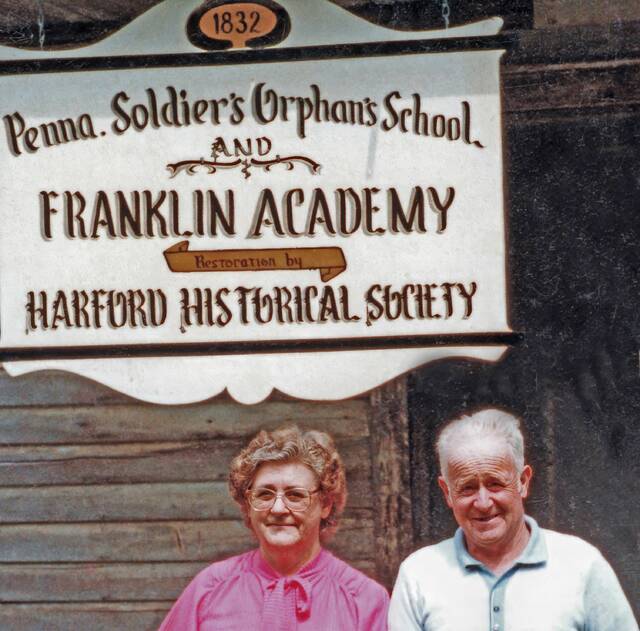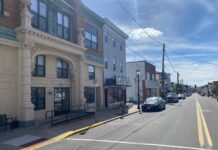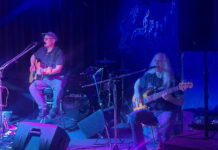
Alan (right) and Margery (left) Rhodes were pertinent in preserving the history of Harford, Pennsylvania, and the Soldier’s Orphan’s School.
Photo Credit — Submitted by Harford Historical Society
HARFORD — The history of Harford is rich and goes back over 200 years. Due to the hard work of some of the town’s passionate community members, much of that history can still be observed today!
The institution that became the foundation of the Civil War Soldier’s Orphan’s School began in 1817 when Caleb Richardson Jr. established the Franklin Academy in his home. In 1832, the school had expanded to the Franklin Academy and Franklin Hall was built. In 1850 the school became an accredited university. Then in 1865, the state took over the property for a school for children orphaned by the Civil War.
Today, the Soldier’s Orphan’s School is one of the few remaining orphan schools still standing in Pennsylvania and two of the original buildings, including Franklin Hall, are a local museum housing civil war relics and memorabilia from the Harford community.
Two people who were influential in preserving this local history was Alan and Margery (Empet) Rhodes.
Alan’s father, Glenn Rhodes, and his wife, Leda (Adams), were both born in Harford and were familiar with the school when it was still a functioning orphans’ school. In 1948, Glenn bought the Orphan’s School Farm and the two buildings that are still in existence today.
Glenn continued farming on the land and in 1959, his son, Alan and his wife, Margery (Empet), bought the property. They expanded the farm eventually using the buildings for their capon business. Glen and Leda had a passion for local history and instilled this passion in Alan.
In 1987, the Rhodes sold part of their farm and the historic buildings to the Harford Historical Society. Margery and Alan thought the buildings should be restored and in 1990, the Harford Historical Society took on the project of preserving the buildings and creating a museum.
The buildings were old and work had to be done to make everything safe and usable, but the people of Harford came together to put their skills to work. Roger Whitaker Sr., Anson Tiffany, Clifford Jones, Max Jones, Arthur Empet, Spencer Empet, Garfield Williams. Ed Vanderford, Kenneth Laurie, Charlotte Squiers, Robert Squiers, Donna Salensky, and Masters Concrete began to repair foundations, reinforce and replace windows, conduct roof and chimney repair, add insulation, and plaster and paint walls and ceilings. The final finishing of the woodwork was done by Ivie Simons, Betty Laurie, Charlotte Squiers, Clifford Jones, Max Jones, and John Schultz.
After many hours of volunteer work, the building was ready and the museum was opened. It still stands today as a memorial to the Franklin Academy, Harford University, and the Soldier’s Orphan’s School.
But Alan and Margery Rhodes were not finished. As Margery dug into old histories, she discovered there was much more to the orphans’ school than just the two buildings that had been restored. She began walking the grounds, examining the sites of old stone walls and foundations, and taking careful measurements of placement and distance between the buildings. She also read Pennsylvania State Government superintendent reports and found out names of buildings and which buildings were adjacent to others. Her research enabled her to locate the walkways between the buildings and the boys’ and girls’ privies. To make this history come alive, Margery began designing a scaled model of the old school for future generations. Soon her husband, children, and grandchildren were involved in the project.
To reward the children, Margery carefully plotted the hours and days that the children worked in a notebook which is still kept by her daughter, Linda, today. Her husband added to the realism of the project by collecting twigs to add trees with gnarled trunks. He cut piles of pine shavings into tiny strips to duplicate the clapboard construction. He built the wooden walkways, designed a waving flag with ropes and a mechanism to raise and lower it, cut toothpicks for the sills of the small windows, and reproduced a cross barred wooden fence placed according to an old picture of the school. According to Margery’s notebook, the entire project took 550 hours. Today, you can enjoy this model by listening to a recording which explains many of the details of the model.
On Saturday, May 10, from 9 a.m. to 2 p.m., the Harford Historical Society will be holding its monthly used book sale at the Soldier’s Orphan’s School. The museum will also be open at this time. Come by to find some good books, and enjoy the preservation of history completed by so many of Harford’s residents.



